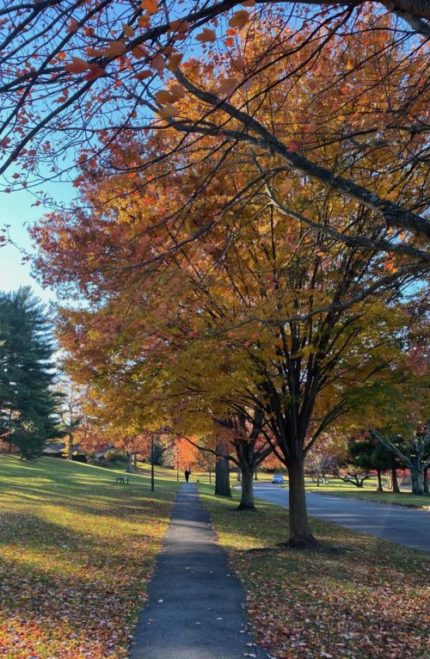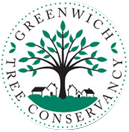There are streets and roads in town that frequently elicit comments such as “oh, I love that street” or “that is one of my favorite roads to drive on”. This enthusiasm can often be attributed to the mature trees growing along our favorite roads as their canopies create a deeply rooted landscape that encourages us to look more closely and engage with the neighborhood.
Large trees are considered ‘keystone structures’ due to the important role they play in supporting critical biodiversity. Under a mature tree you can find small ecosystems where moisture and key nutrients are retained in the soil, allowing it to remain stable and able to support a vast array of life. When the living organisms within soil become severely depleted the result is dirt that erodes more easily and contributes to stormwater runoff and local flooding. Town residents have been experiencing this problem at an increasing rate during recent strong storms.

A handful of mature trees in a developed setting create a biodiverse “hotspot” offering all these benefits along with an environment that hosts many familiar species of birds and the food system they depend upon. Small trees simply cannot do this.
The leaves of street and roadside trees actively filter air through the cellular process of photosynthesis and provide physical barriers that catch airborne dust particles and solid pollutants, providing significant human health benefits. This is particularly important in an area such as southwestern CT where increasing traffic brings with it increasing air pollution.
Street trees shield adjacent structures and people from summer heat and the sun’s uv rays, lowering air-conditioning bills. They buffer wind and weather in winter. In a 2013 controlled study, using a temporarily installed tree line and electron microscopy, a greater than 50% reduction in airborne particulate matter was found in the houses screened from the road by the temporary tree line.
Mature roadside trees are able to spread out and store more carbon than forest trees as they enjoy more light and less competition.
Consider that a 36” Red Oak stores 6000 times more carbon than a newly planted 1” caliber tree. A 30” diameter tree filters 60—70 times the pollutants of a 3” caliber tree. A 20-year-old Red Maple has been shown to remove 3100 pounds of carbon dioxide and intercept 27,000 gallons of rainfall, in just 20 years of growth. Think of all the benefits the mature trees in your neighborhood provide.
With an increasing number of residents choosing to live in the more densely populated areas of town, the value our mature street trees play in our quality of life becomes clearer. It is well known that trees increase property values and reduce crime. Office workers with a view of trees report less stress and more satisfaction with their jobs. Whether you find yourself sitting on a park bench or enjoying a walk along a back country road, leafy neighborhoods create environments of interaction, where people are more likely to spend time outside.
The benefits trees provide us has yet to be fully understood. Recent study suggests an increasing awareness of the essential role they play in human health and well-being.
Street and roadside trees provide unparalleled scenic beauty and bring a sense of place and character to a town or city. The Tree Conservancy works with the town to preserve the town trees that are a part of our urban forest and encourages all residents to better understand the benefits they enjoy and the value of their own trees.
This article originally appeared in the Greenwich Sentinel. Click here to read.

